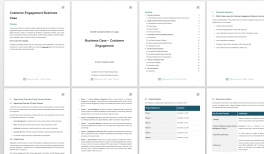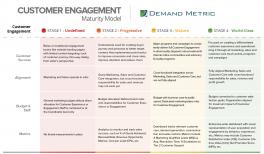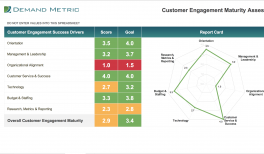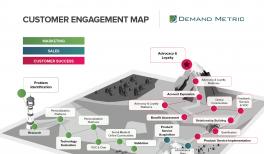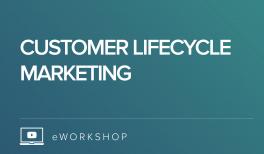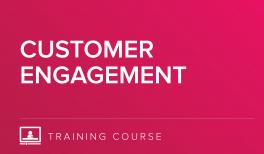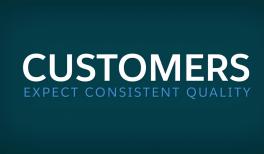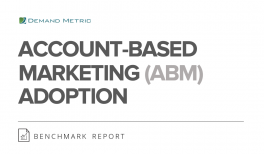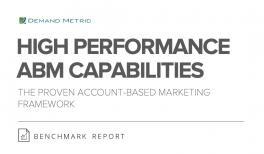This report details the findings of a joint study by Demand Metric and Salesforce Pardot to study the current state of lifecycle marketing, measuring the adoption of this strategy and how it is performing.
Customer Lifecycle Marketing Benchmark Report
Resource Overview
Related Resources
Introduction
That customers go through a lifecycle in their relationship with vendors is a fundamental marketing concept. The phases of the lifecycle – Awareness (Attraction), Consideration, Purchase, Retention and Advocacy – are understood well enough. Marketing has traditionally viewed its role as the owner of the Awareness and Consideration phases of the lifecycle, where it would devote its resources to gaining mindshare with and qualifying prospects before passing them to sales to continue the journey.
Effective ownership of each phase of the customer lifecycle presents a number of challenges. Fragmented ownership of each phase creates inconsistent levels of effort and results. There is often difficulty knowing exactly where a customer is in the lifecycle. Gaps in phase ownership can occur where no nurturing is taking place at all. Or, ownership overlap can occur, which isn’t an inherently negative state, but can create redundant nurturing efforts that confuse customers and are simply inefficient.
When overlap does occur, it’s rarely intentional; it is usually the result of a strategy or technology vacuum. The most egregious problem, however, is that customers don’t see their relationship with vendors as a series of fragmented phases with varying levels of nurturing, attention and care. Customers expect seamless, consistent quality across all touch points in their relationships with vendors.
Customer lifecycle marketing has evolved as a holistic approach to marketing across each phase or stage of the lifecycle. A commitment to a customer lifecycle marketing strategy involves strong alignment of the departments that have an ownership stake in the customer lifecycle, ensuring a high level of coordination and communication between owners of each phase to create a consistent customer experience.
Demand Metric and Salesforce Pardot collaborated to study the current state of lifecycle marketing, measuring the adoption of this strategy and how it is performing. This report details the findings of this study.
Table of Contents
- Introduction
- Executive Summary
- Adoption of the Strategy
- Ownership & Responsibility
- Investment & Effectiveness
- Benefits & Challenges
- Revenue Influence & Future Commitment
- Analyst Bottom Line
- Acknowledgements
- About Salesforce Pardot
- About Demand Metric
- Appendix - Survey Background
Research Methodology
This 2015 Customer Lifecycle Marketing Benchmark Study survey was administered online during the period of August 12 through October 5, 2015. During this period, 196 responses were collected, 170 of which were qualified and complete enough for inclusion in the analysis. The representativeness of these results depends on the similarity of the sample to environments in which this survey data is used for comparison or guidance.

